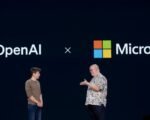Oracle Unveils Digital Assets Platform for Banks
Oracle has announced a new platform called Digital Assets Data Nexus to help banks and financial institutions enter the world of digital assets and tokenization. This enterprise-grade tool, set to launch in 2026, combines blockchain technology with artificial intelligence to make issuing and managing digital assets easier and more secure.
The announcement came during the Money 20/20 conference, where Oracle highlighted how this platform addresses key challenges like scalability, security, and regulatory compliance. Banks can now explore tokenization of assets, streamlined settlements, and integration with existing systems without major overhauls.
Platform Overview and Purpose
Oracle designed Digital Assets Data Nexus to empower banks in the growing digital economy. It targets institutions eager to tokenize real-world assets, such as real estate or securities, turning them into digital forms on blockchain networks.
This move reflects the rising demand for blockchain in finance. With global tokenization markets projected to reach trillions by 2030, Oracle aims to position banks at the forefront. The platform builds on Oracle’s existing blockchain services, which many financial firms already use for secure transactions.

Experts note that tokenization can reduce settlement times from days to minutes, cutting costs and risks. Oracle’s entry could accelerate adoption among traditional banks hesitant about crypto technologies.
Key Features Powered by Advanced Tech
The platform integrates Oracle Blockchain with Oracle AI Database 26ai for robust performance. It offers multi-ledger infrastructure, allowing operations across different blockchain networks seamlessly.
Pre-built tokenization smart contracts simplify the creation of digital assets. AI-driven compliance tools monitor transactions in real time, ensuring they meet regulatory standards.
Workflow orchestration uses AI agents to automate processes, from asset issuance to settlement. This reduces manual work and errors for banks.
Support for Hyperledger Fabric and Besu enables compatibility with both permissioned and public Ethereum-based blockchains. Users gain flexibility in choosing networks that fit their needs.
- Multi-ledger support for seamless integration across blockchain types.
- AI-powered compliance and reporting to handle regulatory demands.
- Pre-configured smart contracts for quick tokenization setup.
- Enterprise-grade security features to protect against threats.
Benefits for Financial Institutions
Banks stand to gain efficiency in handling digital assets. The platform streamlines integration with core banking systems, making it easier to incorporate blockchain without disrupting operations.
It addresses pain points like interoperability between ledgers. For instance, cross-chain transactions become faster and more reliable.
Financial leaders see this as a way to tap into new revenue streams. Tokenized assets can attract investors seeking fractional ownership in high-value items.
Oracle emphasizes cost savings through automation. Institutions can deploy solutions faster, potentially reducing development time by months.
| Feature | Benefit | Example Use Case |
|---|---|---|
| AI Workflow Orchestration | Automates processes | Streamlines asset tokenization and settlement |
| Multi-Ledger Infrastructure | Enhances interoperability | Connects permissioned and public blockchains |
| Tokenization Smart Contracts | Speeds up deployment | Issuing digital securities quickly |
| Compliance Tools | Ensures regulatory adherence | Real-time monitoring for audits |
Launch Timeline and Future Plans
Oracle plans to roll out Digital Assets Data Nexus in 2026. Early access might be available to select partners before the full release.
The company will continue updating the platform based on user feedback. Integration with emerging technologies like Agentic AI is on the roadmap.
This launch aligns with broader industry trends. Recent events, such as major banks experimenting with stablecoins, show growing interest in digital assets.
Oracle’s senior vice president highlighted the platform’s role in making digital finance accessible. It complements existing tools, building on partnerships formed since 2019.
Broader Impact on the Industry
The introduction could reshape how banks approach blockchain. It may encourage more institutions to explore tokenization, boosting market growth.
Competitors might respond with similar offerings, fostering innovation in fintech. Analysts predict increased collaboration between tech giants and banks.
Challenges remain, including regulatory hurdles in various countries. However, Oracle’s focus on compliance could help navigate these issues.
This development ties into the surge in real-world asset tokenization, with markets hitting 30 billion dollars on Ethereum alone. It positions Oracle as a key player in bridging traditional finance and crypto.
Share your thoughts on how this platform might change banking. What features excite you most? Comment below and spread the word to fellow finance enthusiasts.








